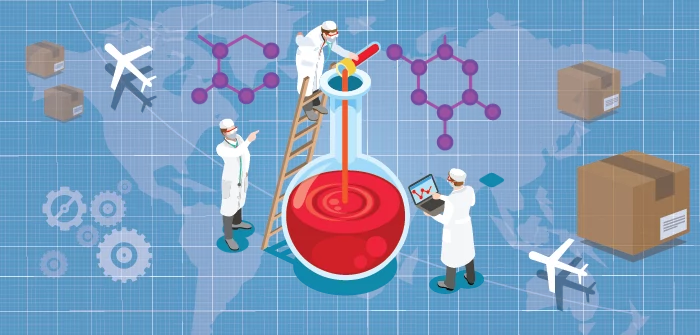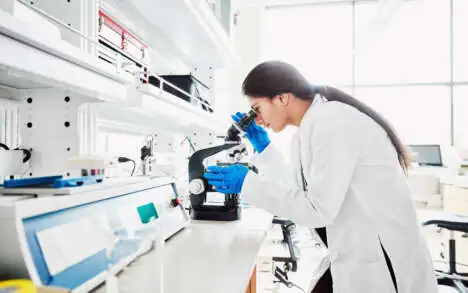During the production of parenteral medicinal products or other products that are required to be sterile, sterility assurance is paramount for the provision of a safe product to the end user. The sterility test is mandatory for all sterile medicinal products and remains an important criterion for product release by demonstrating that the finished product is sterile, i.e. entirely free from living organisms of all types. However, can the assurance of sterility of a medicinal product only be demonstrated by passing the sterility test? The answer is short and simple, no. Section 2.6.1 of the European Pharmacopoeia describes: a satisfactory result only indicates that no contaminating micro-organism has been found in the sample examined in the conditions of the test [1].
Hence, Sterility Assurance is key, and represents the sum of many contributing aspects that provide a high level of confidence that microbial and pyrogen contamination has been excluded in the final drug product. Various guidelines around sterile manufacturing are available, among others the FDA’s Guidance for Industry on Sterile Drug Products Produced by Aseptic Processing (https://www.fda.gov/media/71026/download) [2] and EudraLex Volume 4 – Annex 1 from 2008 (https://ec.europa.eu/health/sites/health/files/files/eudralex/vol-4/2008_11_25_gmp-an1_en.pdf)[3]. Its successor, with a second draft issued for comments in February 2020 (http://academy.gmp-compliance.org/guidemgr/files/2020_annex1ps_sterile_medicinal_products_en.pdf) underwent a significant revision. The new draft includes several references to the requirement for application of the principles of Quality Risk Management (QRM) as a pro-active tool for sterility assurance to be part of an effective pharmaceutical quality system. As such, references to ICH-Q9 on quality risk management (https://www.ema.europa.eu/en/documents/scientific-guideline/international-conference-harmonisation-technical-requirements-registration-pharmaceuticals-human-use_en-3.pdf) [5] and ICH Q10 on pharmaceutical quality system (https://www.ema.europa.eu/en/documents/scientific-guideline/international-conference-harmonisation-technical-requirements-registration-pharmaceuticals-human_en.pdf) [6] are embedded in the new revision.
Sterile pharmaceutical manufacturing generally comprises a complex, multi-step processing system in which significant risks from microbial contamination are presented by diverse sources. To reduce these risks, a holistic contamination control strategy (CCS), based on Risk Assessment requires development and implementation to facilitate an organization’s understanding of all of their design, technical, procedural and organisational controls. The requirement for facilities to have a specific CCS is one of the major additions to the new revision of the draft Annex 1. Development of a holistic CCS requires in-depth knowledge and understanding of the pharmaceutical process as a whole such that all risks can be identified along with the associated contamination controls.
Ultimately, it is the overall effectiveness of the sum of the contamination controls in place that provides a higher level of assurance that a product is sterile. A solid contamination control program using appropriate design, validated control systems and a scientifically sound environmental monitoring program can be more meaningful than the sterility test.
Implementation of a robust CCS based on scientific knowledge also provides benefit for the manufacturing of other non-sterile products but require control and reduction of microbial contamination to meet the requirements of product quality.
PharmaLex are uniquely placed to support your organisation in many ways with Sterility Assurance and have several subject matter experts available with in-depth experience of the requirements of Contamination Control, development of a Contamination Control Strategy and investigation of Sterility Assurance issues. If you would like our Team to examine your Contamination Control Strategy and work with you to enhance sterility assurance in your process, please connect with us to discuss +353 1 846 4742 or contact@pharmalex.com
References
- European Pharmacopoeia (2020) 10th edition, section 2.6.1
- FDA (2004) Guidance for Industry: Sterile Drug Products Produced by Aseptic Processing — Current Good Manufacturing Practice https://www.fda.gov/media/71026/download
- EudraLex Annex 1, Manufacture of Sterile Medicinal Products (2008)
https://ec.europa.eu/health/sites/health/files/files/eudralex/vol-4/2008_11_25_gmp-an1_en.pdf - Annex 1 (2020) Manufacture of Sterile Products http://academy.gmp-compliance.org/guidemgr/files/2020_annex1ps_sterile_medicinal_products_en.pdf
- ICH (2006) ICH guideline Q9 on quality risk management https://www.ema.europa.eu/en/documents/scientific-guideline/international-conference-harmonisation-technical-requirements-registration-pharmaceuticals-human-use_en-3.pdf
ICH (2008) ICH guideline Q10 on pharmaceutical quality system https://www.ema.europa.eu/en/documents/scientific-guideline/international-conference-harmonisation-technical-requirements-registration-pharmaceuticals-human_en.pdf








